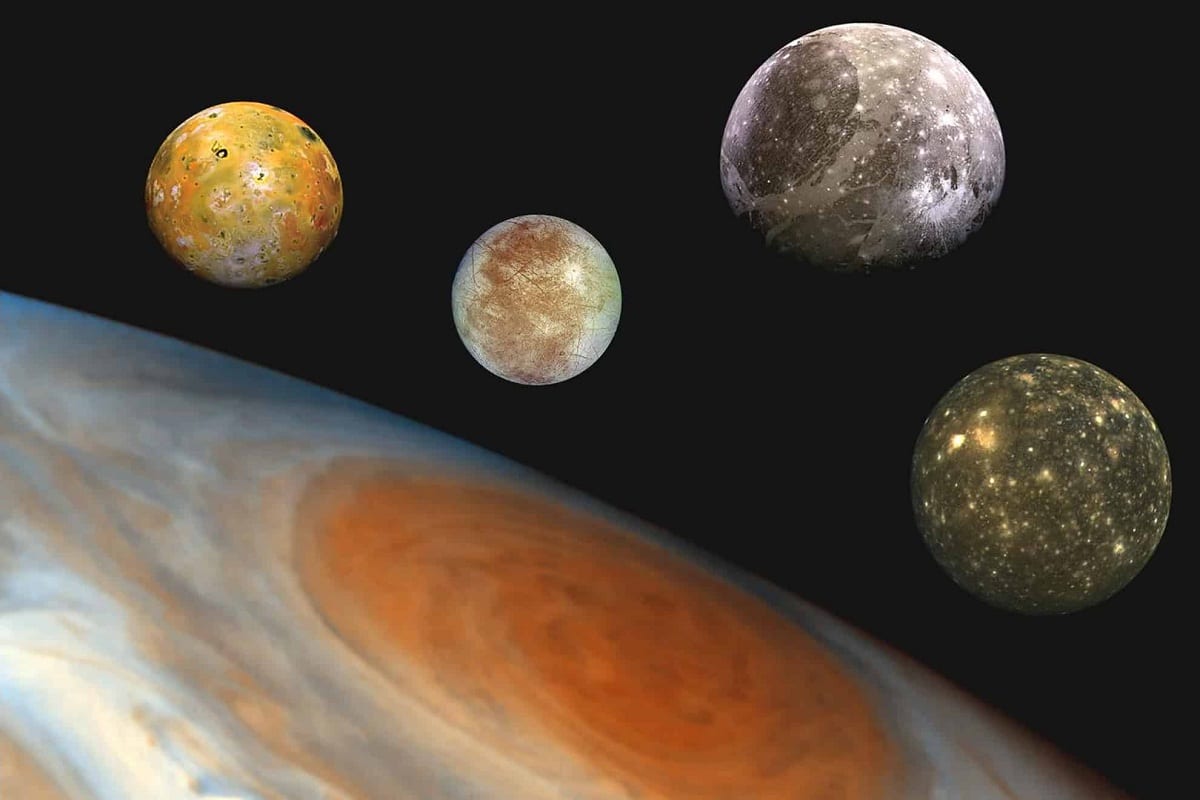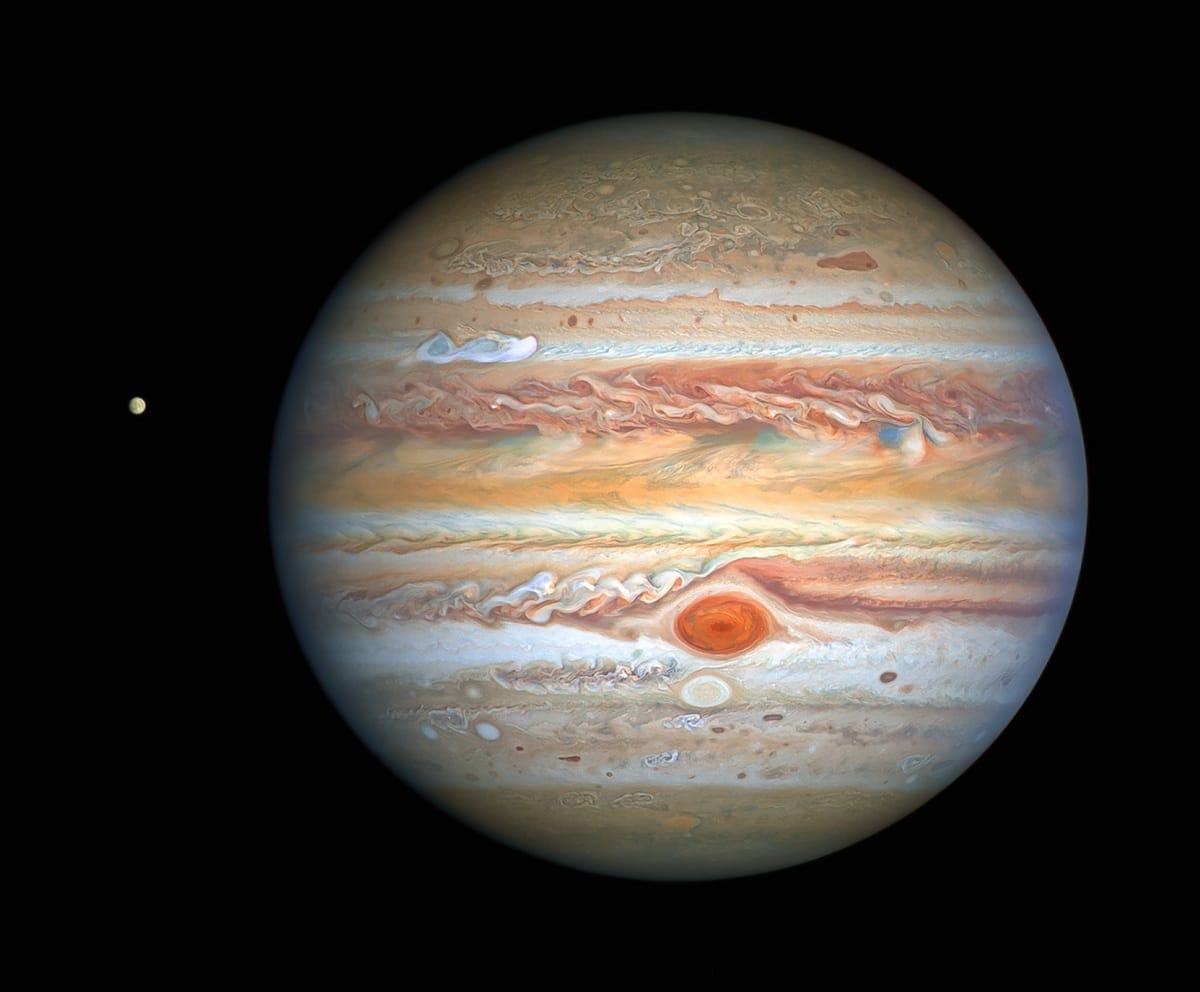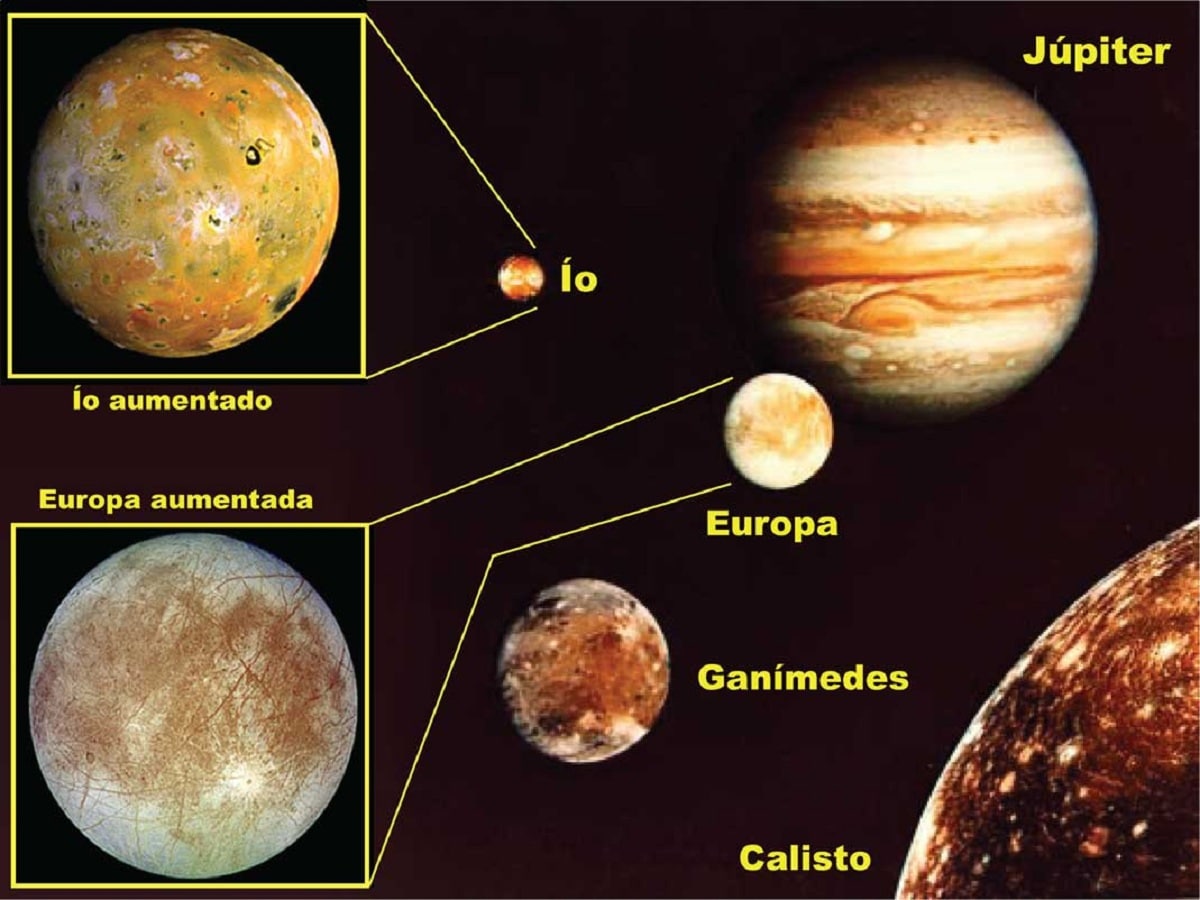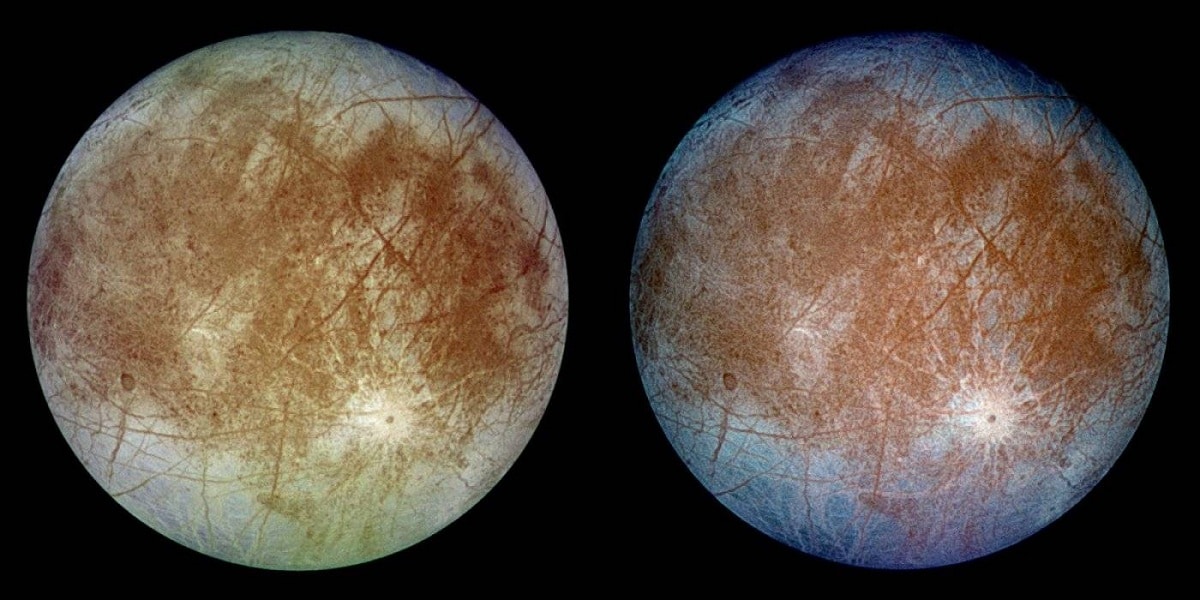
We know that Jupiter is the largest planet in the entire solar system. Numerous observations have been made to determine the Jupiter satellites. Until today it is known that there are 79 moons on this planet. Natural satellites are also called the moon and it is a celestial body that orbits a planet. In the solar system there are only 6 planets that have natural satellites minus Mercury and Venus.
In this article we are going to tell you all the characteristics and discoveries of the satellites of Jupiter.
Jupiter characteristics

The density of Jupiter is about a quarter the density of our planet. However, the interior is made up mostly of the gases hydrogen, helium and argon. Unlike on Earth, there is no clear distinction between the Earth's surface and the atmosphere. This is because atmospheric gases slowly transform into liquids.
Hydrogen is so compressed that it is in a metallic liquid state. This does not happen on our planet. Due to the distance and the difficulty of studying the interior of this planet, it is not yet known what the nucleus is composed of. It is speculated that of rocky materials in the form of ice, given the very low temperatures.
Regarding its dynamics, one revolution around the Sun every 11,9 Earth years. Due to the distance and the longer orbit it takes longer to go around the Sun than our planet. It is located at an orbital distance of 778 million kilometers. Earth and Jupiter have periods when they move closer and farther from each other. This is because their orbits are not all the same years. Every 47 years, the distance between the planets varies.
The minimum distance between the two planets is 590 million kilometers. This distance occurred in 2013. However, these planets can be found at a maximum distance of 676 million kilometers.
Jupiter satellites

Since studying began in the year From 1892 to this day the list of satellites of Jupiter is 79. They have been discovered little by little and finding out their characteristics. They are named after the lovers, with views and daughters of the God of Jupiter. These satellites are divided into several groups: regular and irregular. Within the first group we have the Galilean moons and the programs and retrogrades in the irregular ones. There are 8 regular moons and they all have a prograde orbit. This means that in the orbit the displacement of the celestial body rotates in the same direction in which the planet rotates. Not all satellites have a round shape, but there are some that are completely amorphous.
Some think that the satellites formed from a circumplanetary disk, a gas accretion ring, and solid fragments similar to that of a protoplanetary disk surrounding a star.
Continuing with the division we have the irregular moons. They are smaller objects in terms of size and more distant than regular ones. It has orbits of all kinds. Within this large group we have the moons with prograde orbit. Within the classification of irregular moons we also find other groups. The first is the Himalia group. It is a group of Jupiter's satellites that have a similar orbit and are named after the largest moon in that region. So named because Himalia is 170 km in diameter compared to 36, 20 and 80 of Listea, Leda and Elara. Respectively.
Then we have another group within the irregular moons. They are the retrograde calls. These moons are named for having an orbit contrary to the rotation of Jupiter. In this group we have the rest of all the moons up to 79.
Jupiter's main satellites

The main moons of this planet are 4 and are called Io, Europa, Ganymede and Callisto. These 4 moons are Galilean and belong to the group of regular ones and can be seen with a telescope from our planet.
Moon Io
It is the closest and densest satellite of the Galilean moons. Here we can find very extensive plains and other mountain ranges but it does not have any crater as a result of the pact of some meteorite. As it has no craters, it is thought to have a short geological age. It has more than 400 active volcanoes, being the most geologically active celestial object in the entire solar system.
It has a small, very thin atmosphere whose composition is sulfur dioxide, among other gases. It barely has water due to its proximity to the planet and the effect it has on this moon.
Moon Europa
It is the smallest of the 4 main moons. It has an icy crust and a core probably made of iron and nickel. Its atmosphere is also quite thin and thin and is made up mostly of oxygen. The surface is quite smooth and this texture has led scientists to think that it may have had an ocean below the surface that may have served to create life. Because it is possible that life exists, Europa has become the most interesting satellite to explore in the entire solar system.
Satellites of Jupiter: Moon Ganymede
It is the largest satellite in the entire solar system and is the only one that has its own magnetic field. It is twice the size of our moon and he is also roughly the same age. It is composed mainly of silicates and ice. Its core is sunken and it is rich and iron. It is thought that there is an internal ocean that can hold more water than all the oceans on earth.
Callisto Moon
It is the second largest satellite of Jupiter. It is not heated by tidal forces caused by Jupiter's gravity. The furthest. It has a synchronous rotation and always shows the same face to the planet as it happens to the Earth's moon.
I hope that with this information you can learn more about the satellites of Jupiter and their characteristics.